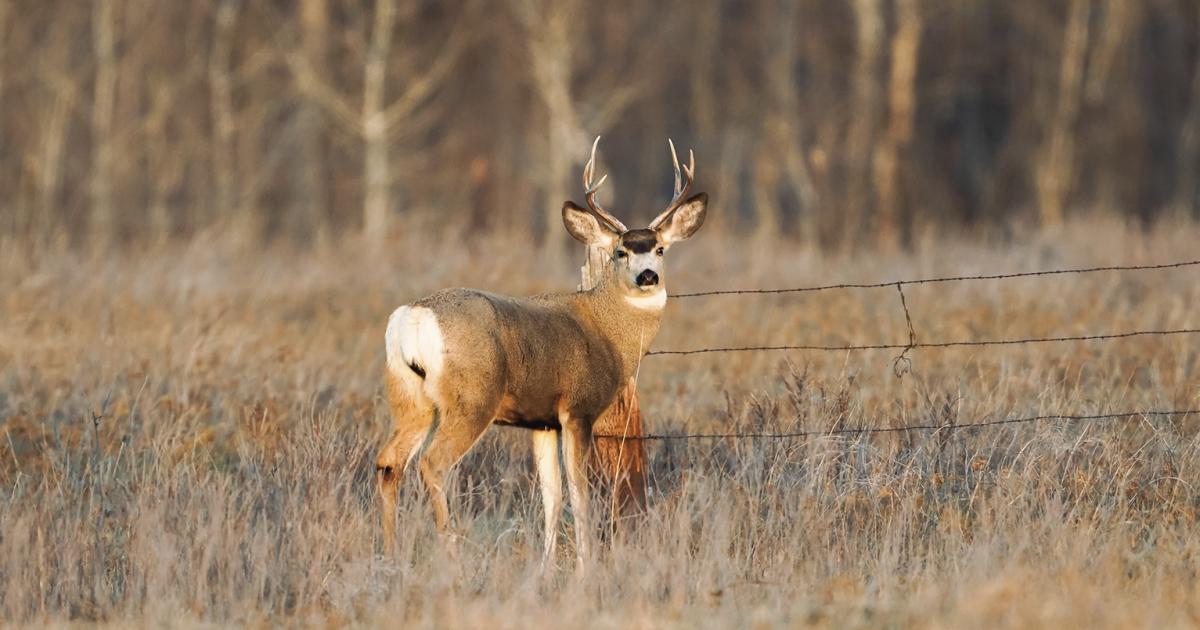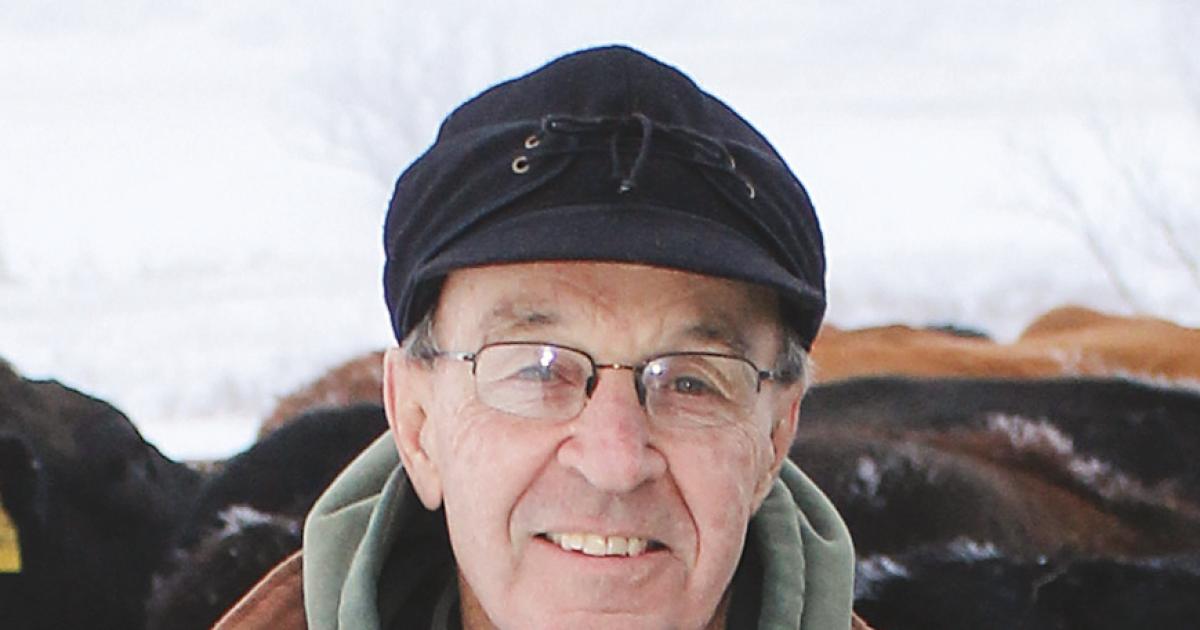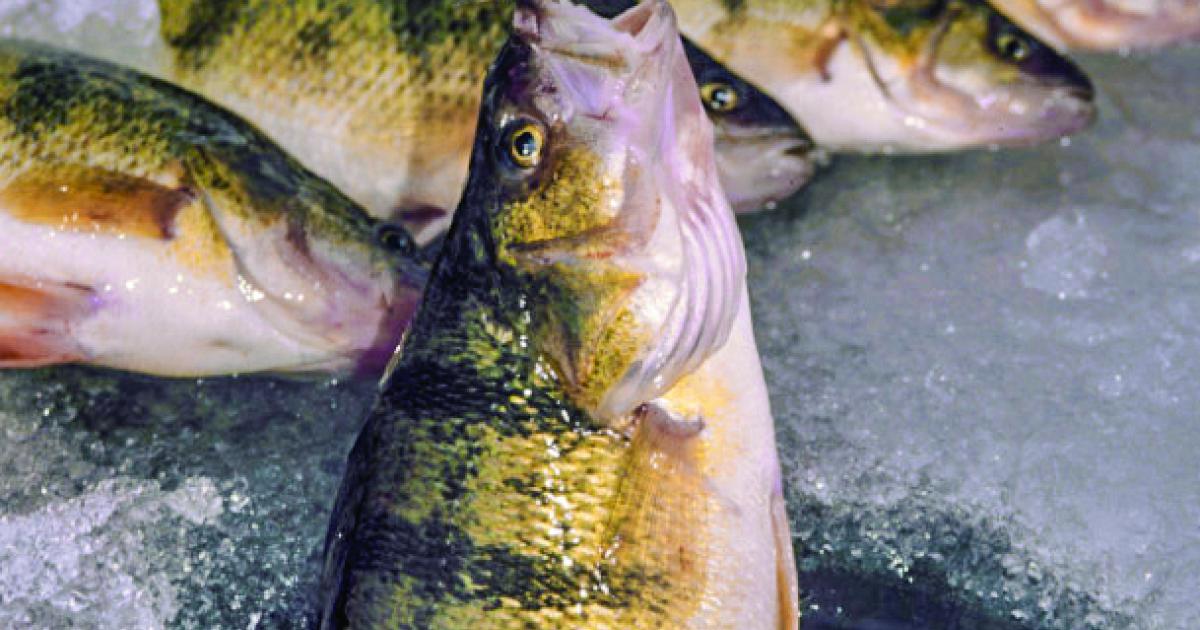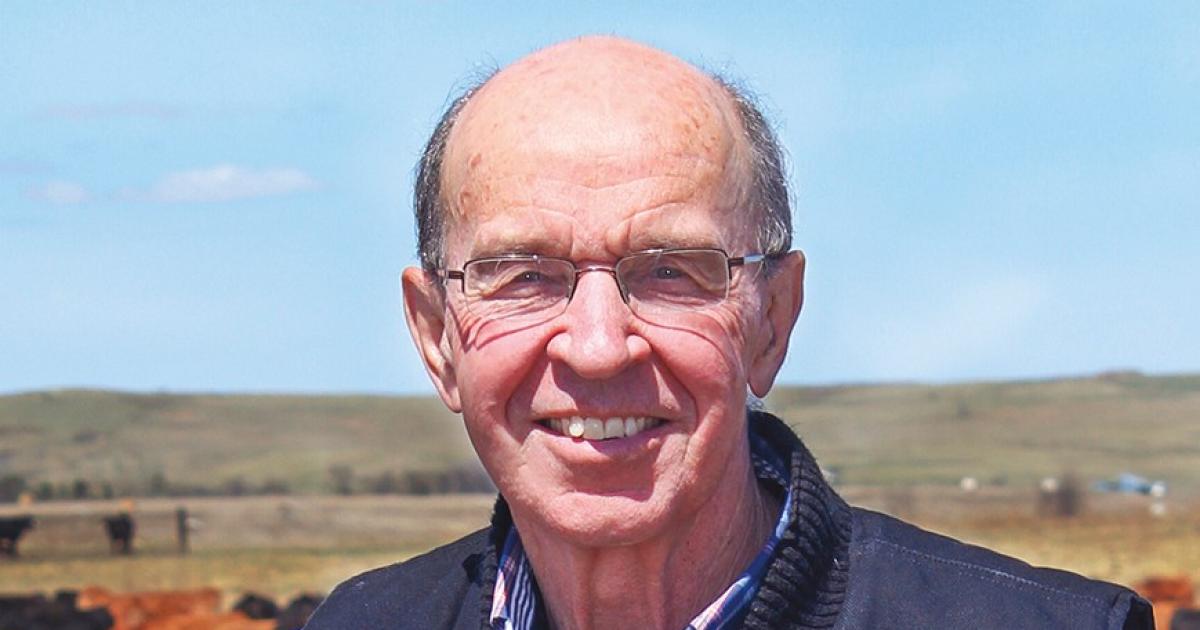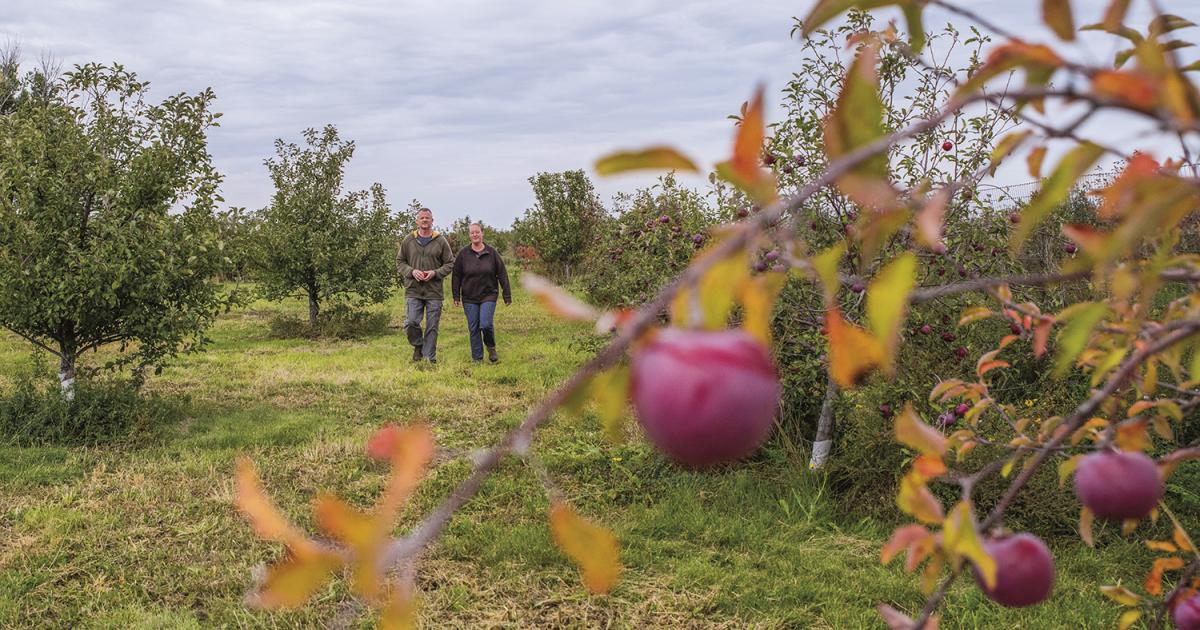Severe drought conditions that impacted wildlife across North Dakota last year are, thankfully, in the rearview mirror. While remaining wildlife habitat across the state’s landscape is looking good as we head into fall, fallout from hot, dry conditions in 2021 are still being felt, as the N.D. Game and Fish Department, for the first time in six years, reduced the number of deer gun licenses made available to hunters for the November season.
The following hunting season preview is a condensed version of an article originally appearing in the August-September issue of the N.D. Game and Fish Department magazine, North Dakota OUTDOORS.
Hunters and trappers can find more information, including season details and regulations for upland game, migratory game birds and furbearer hunting and trapping, on the department’s website at www.gf.nd.gov/hunting or by calling 701-328-6300.
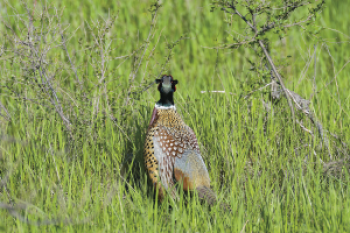 |
| Ring-necked pheasantRing-necked pheasant |
PHEASANTS
The number of roosters heard crowing during the N.D. Game and Fish Department’s (NDGF) 2022 spring pheasant crowing count survey was down 22% statewide from last year.
Department biologists said the decrease came as no surprise, as they documented below-average production from late summer roadside counts, and the hunter harvested wing survey confirmed a 2-to-1 juvenile-to-adult ratio, which are lingering effects from the drought of 2021.
In 2021, about 47,000 pheasant hunters harvested 259,997 roosters, compared to 57,000 hunters and 330,668 roosters in 2020.
WILD TURKEYS
North Dakota’s turkey population is continuing in the right direction, providing more opportunities for hunters.
In 2022, more than 7,600 spring turkey licenses were made available by NDGF, about 600 more than last year. For the fall turkey season, nearly 4,000 licenses are available, 150 more than 2021.
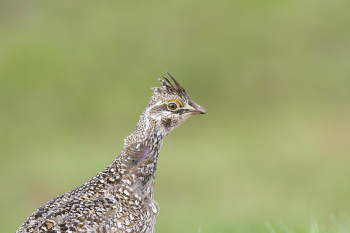 |
| Sharp-tailed grouse |
SHARP-TAILED GROUSE
The spring sharp-tailed grouse census indicated a 13% decrease in the number of male grouse counted compared to last year.
These declines align with poor reproduction documented during the 2021 drought. NDGF biologists observed low sharp-tailed grouse reproduction rates during late summer roadside counts and found a low juvenile-to-adult ratio from hunter-submitted wings.
In 2021, nearly 16,000 hunters harvested 45,732 sharp-tailed grouse (down 47%), compared to 19,971 hunters and 86,965 sharp-tails in 2020.
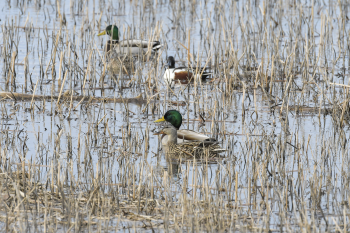 |
| Mallard |
DUCKS
North Dakota wetland habitats rebounded nicely following severe drought conditions in 2021. April blizzards and abundant rainfall brought a dramatic swing from dry to wet on our landscape, setting up better prospects for duck production in the state this year.
The fall flight forecast of ducks from North Dakota is up 26% from last year and is the 25th highest fall flight from the state on record. North Dakota’s waterfowl hunting seasons are always affected by fall weather, and weather patterns from early to late seasons usually are not consistent from year to year. An increase in the percentage of young birds in the fall flight this year should help hunter success. Hunters should take advantage of early-migrants like blue-winged teal during the first two weeks of the season, as teal production appears to be very good.
The NDGF’s 75th annual breeding duck survey conducted in May showed an index of 3.4 million ducks in the state. Wetland conditions across the state varied from good to excellent. Following extreme dryness, the wetland index skyrocketed 616%, the largest single-year percentage increase on record. Overall, this year’s breeding duck index was the 23rd highest in the 75 years of the survey, up 16% from last year, and 38% above the long-term average.
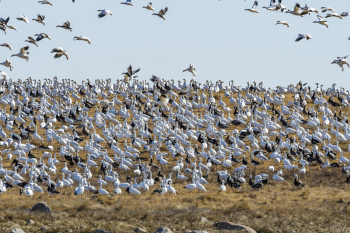 |
| Snow geese |
GEESE
Numbers of temperate-breeding Canada geese, western prairie Canada geese and arctic nesting tallgrass prairie Canada geese, snowgeese and Ross’s geese all remain high.
Production of Canada geese in the state was surprisingly good this year, and large-type Canada geese in the state are abundant because of strong production in the Dakotas the last three years. Indications from central and western arctic breeding areas are that arctic goose production should be average, with some areas possibly negatively affected by late ice-out.
Hunters should expect favorable conditions for waterfowl hunting in North Dakota this year. Canada goose hunting should be good, but early season hunting may be difficult due to crop harvests that are expected to be later.
SANDHILL CRANES
The mid-continent sandhill crane population is in good shape heading into fall. The Northern Great Plains experienced a relatively cool spring, which slowed spring migration of most migratory birds. As a result, few sandhill cranes made it north of the central Platte River in Nebraska, where the annual spring survey is conducted. Given these conditions, a large proportion of the population was likely captured during the survey.
Initial reports from survey crews are promising. In addition, the three-year population index used for guiding hunting season regulations has been stable to slightly increasing for several years now.
Wetland conditions throughout much of North Dakota have also improved tremendously this summer, which will provide plenty of options for roosting sandhill cranes during fall migration.
WHITE-TAILED DEER
NDGF made available 64,200 licenses for the 2022 hunting season, a decrease of 8,000 licenses from 2021. Population and harvest data indicate the state’s deer population is stable to decreasing and below management goals, primarily in eastern hunting units. Due to very dry conditions, and a delay of the first frost by more than a month, a significant epizootic hemorrhagic disease (EHD) die-off of white-tailed deer occurred during summer and fall of 2021.
This EHD die-off was particularly severe along the Missouri River corridor and in some hunting units south and west of the Missouri River. Consequently, there was a decrease in deer licenses allocated in 2022 to encourage population growth. The statewide hunter success rate in 2021 was 57%, which was 9% lower than 2020 and below the goal of 70%.
MULE DEER
Results of NDGF’s spring mule deer survey indicate western North Dakota’s population is 13% higher than last year and 34% above the long-term average.
The spring index was higher than 2021 despite having very poor fawn production. Although fawn production was low due to extreme drought, habitat in the Badlands was still in a condition able to provide high over-winter survival, leading to a slight population increase in 2022.
Biologists counted 2,923 mule deer in 298.8 square miles during this year’s survey. The overall mule deer density in the Badlands was 9.8 deer per square mile.
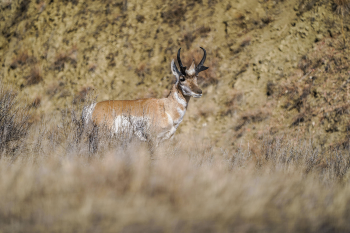 |
| Pronghorn |
PRONGHORN
North Dakota hunters will have slightly more opportunities to hunt pronghorn this year compared to 2021, thanks to a positive bump in the population.
The department’s July aerial survey indicated the overall pronghorn population is up 5% from last year, even though the fawn-to-doe ratio was 41 fawns per 100 does, down from 52 fawns per 100 does last year. The buck-to-doe ratio of 35 bucks per 100 does remains stable and at population objective.
The pronghorn population varied considerably by management region, depending on the effect of nearly two years of drought conditions, EHD and historic spring blizzards.
FURBEARERS
Spring surveys indicated coyote numbers were up slightly in most regions, although their 10-year trendlines are mostly flat or stable. Fox numbers remain low throughout the state, but did tick up slightly in areas of western North Dakota and the Prairie Pothole Region.
Conversely, spring surveys indicated muskrat numbers decreased throughout the state, likely a result of last year’s drought, although slightly wetter conditions maintained in the Red River Valley last year did result in more beavers and mink being observed in that region in spring.
Last season was the first time in over 40 years that bobcat hunting and trapping was allowed statewide. Bobcat regulations will be the same for the 2022-23 season.


